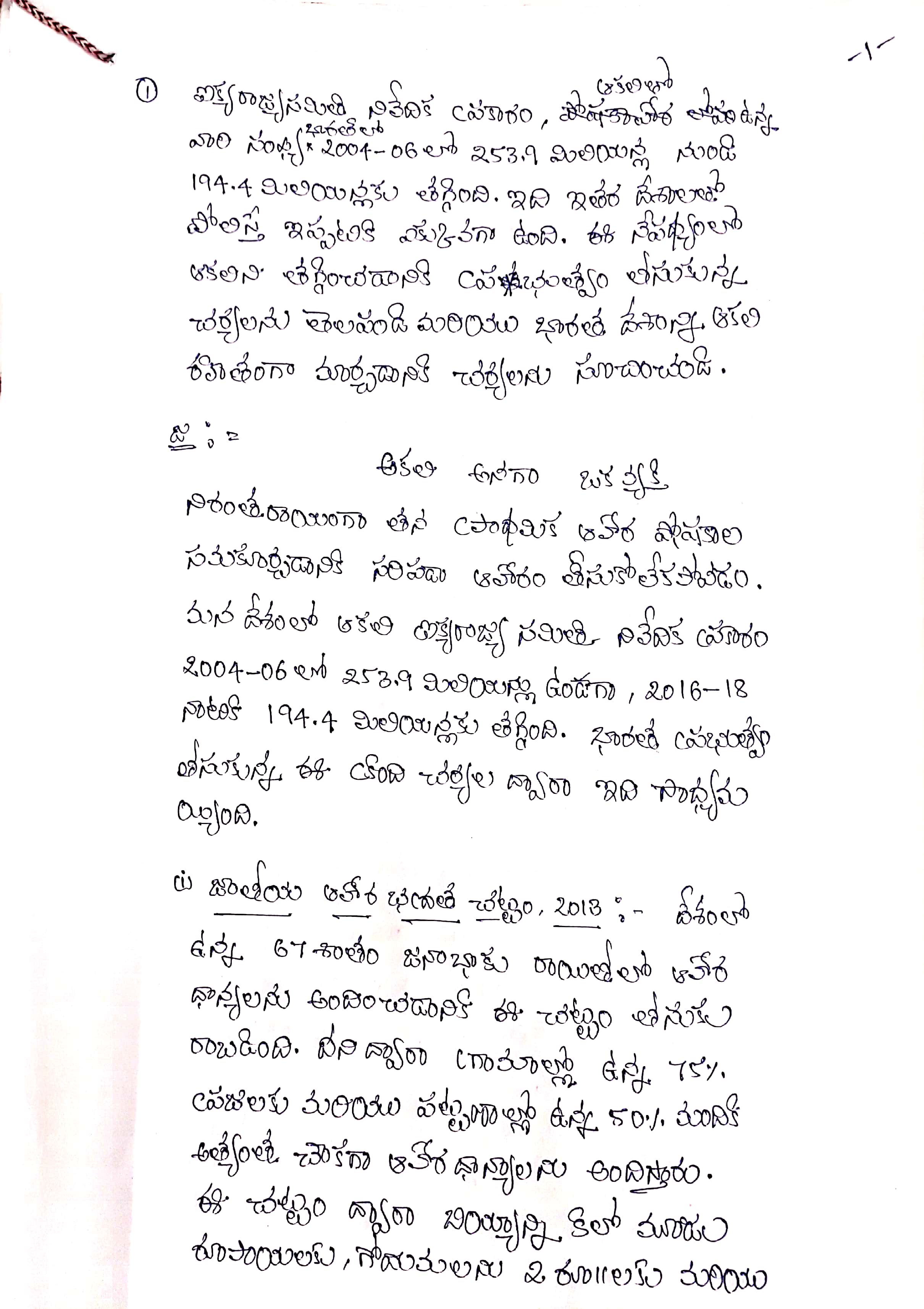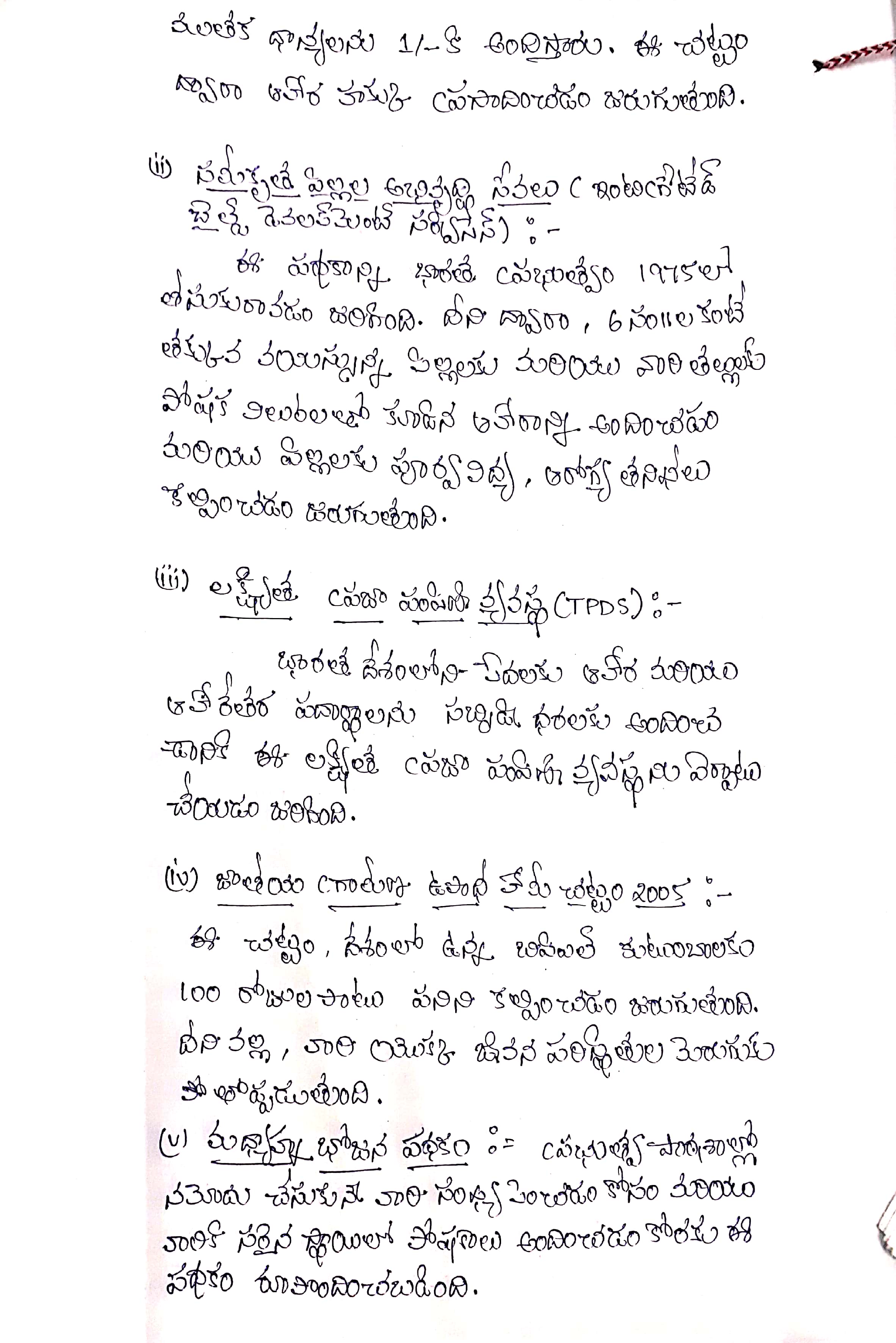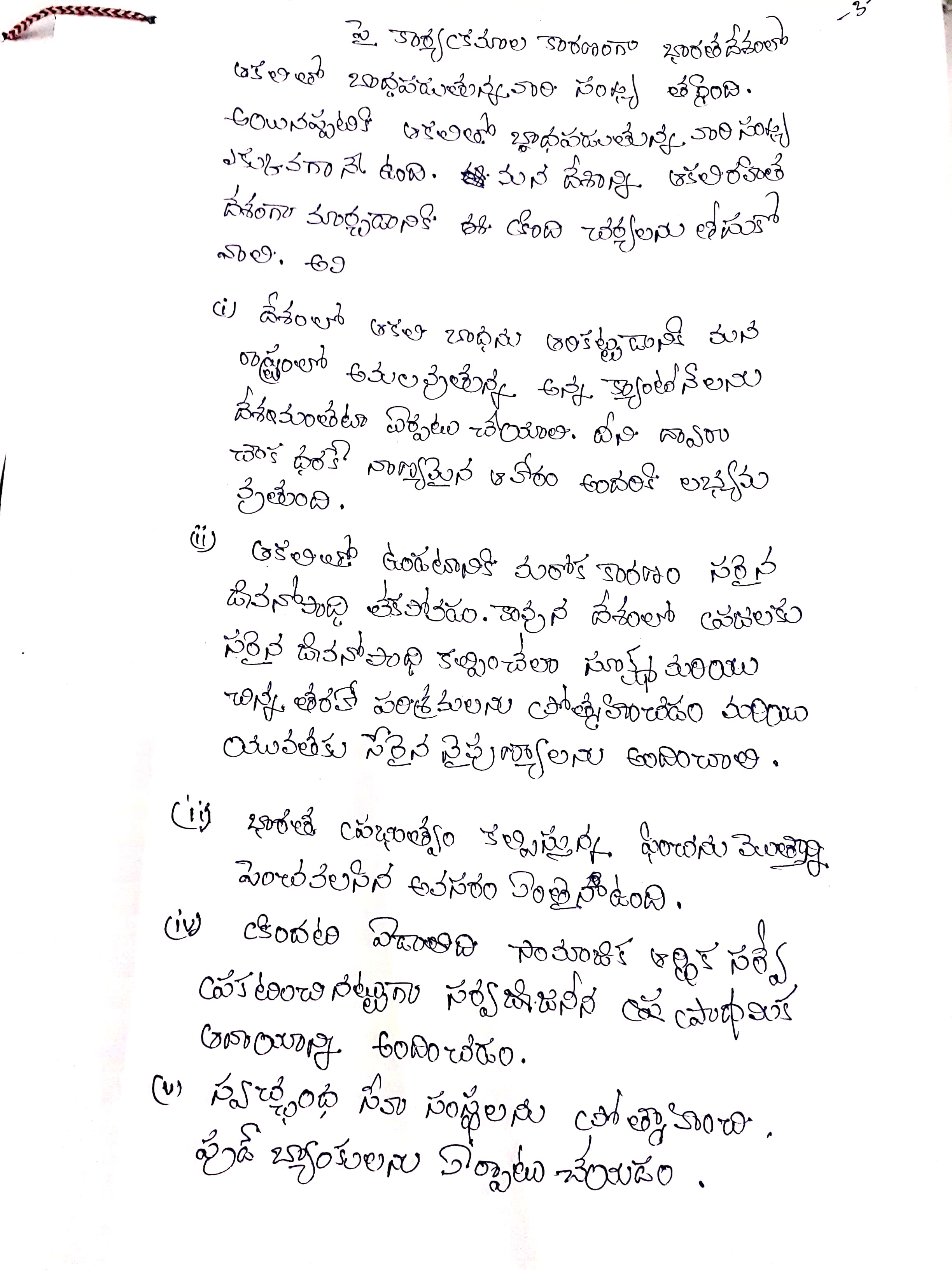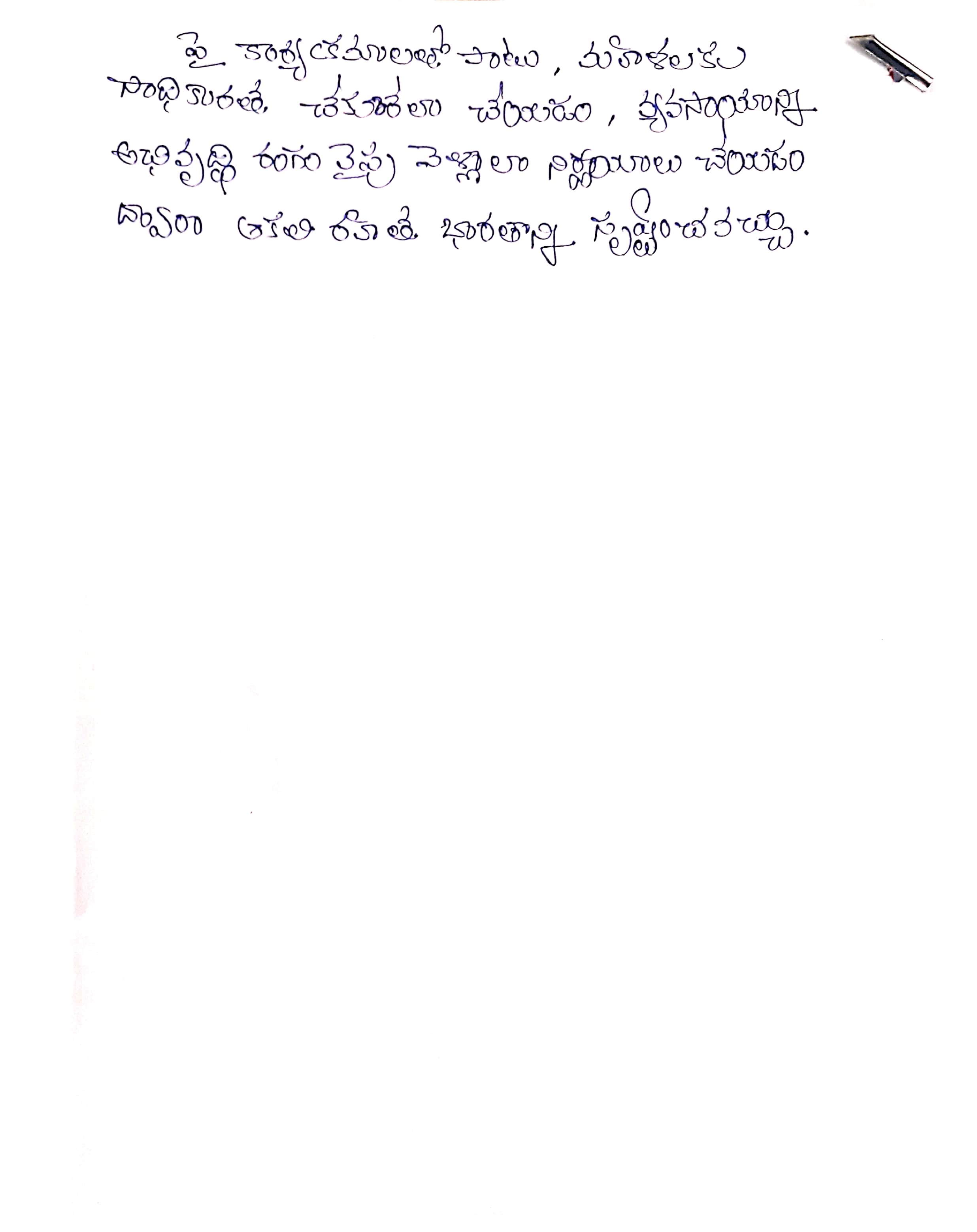



Hunger is a condition in which a person, for a sustained period, is unable to eat sufficient food to meet basic nutritional needs. According to the UN Report estimated 820 million people across the world did not have enough to eat in 2018.
In India, due to continuous efforts by government the number of undernourished people declined from 253.9 million in 2004-06 to 194.4 million in 2016-18. In percentage terms, the prevalence of undernourishment in the total population in India was 22.2 percent in 2004-06 and 14.5 percent in 2016-18. Some of the initiatives to reduce hunger are:
1. Food Security Act, 2013:
As one of the largest food security schemes in the world, it is intended to cover 75% of the rural population and 50 % of the urban population. Rice, wheat and coarse grains are provided at minimal costs.
2. Integrated Child Development Scheme (ICDS), 1975:
It worked for the overall development of children below 6 years primarily, and also women. Its main provisions are supplementary feeding, immunization, and raising awareness about health and nutrition.
3. . TDPS and PDS (Targeted Public Distribution system and Public Distribution System):
The TDPS was introduced in India in 1997. The PDS in India is one of the largest distribution systems of its type across the globe. It ensures the availability of food at subsidized prices at the household level to the poor.
4. Mid Meal Scheme, 1995:
It is designed to better the nutritional standing of school-age children nationwide. States like Andhra Pradesh have extended this scheme to the Intermediate level. Food is served to the students with required quantities of proteins, nutrients and vitamins.
5. Initiatives like Mahatma Gandhi National Rural Employment Programme ( MGNREGA) and National Rural Livelihood Mission (NRLM) led to enhancement of livelihood thereby making poor accessible to nutritious food.
6. Other programmes like Rashtriya Krishi Vikas Yojana (RKVY), the Integrated Schemes on Oilseeds, Pulses, Palm oil and Maize (ISOPOM), Pradhan Mantri Fasal Bhima Yojana, the e-marketplace are initiated to increase the food production in India.
India’s increase in GDP is not in parallel to the hunger and poverty rates. When compared to China, our hunger rates are much higher. The rate at which it is decreasing is alarming to a country like India. The way ahead is:
1. Expand the safety net through ICDS to cover all vulnerable groups (children, adolescent girls, mothers, expectant women)
2. Fortify essential foods with appropriate nutrients (e.g., salt with iodine and/or iron)
3. Popularise low cost nutritious food. For example NGOs introduced low cost nutrient bars to make them available mainly to children and pregnant women.
. Creation of nutritious gardens in schools. Lawngtlai, a district in Mizoram has started this initiative with the slogan “ MY SCHOOL, MY FARM” where the nutritious plants are sown so that the children will be self sufficient with nutritious fruits and vegetables.
5. Anna Canteens in Andhra is providing food at minimal costs to the poor which is helping them to get 3 meals per day.
6. Increase in livelihood through employment should be the main aim of the government alongside with the schemes like PDS.
© 2016, Precisionacademy.in, All rights reserved
Precision Academy